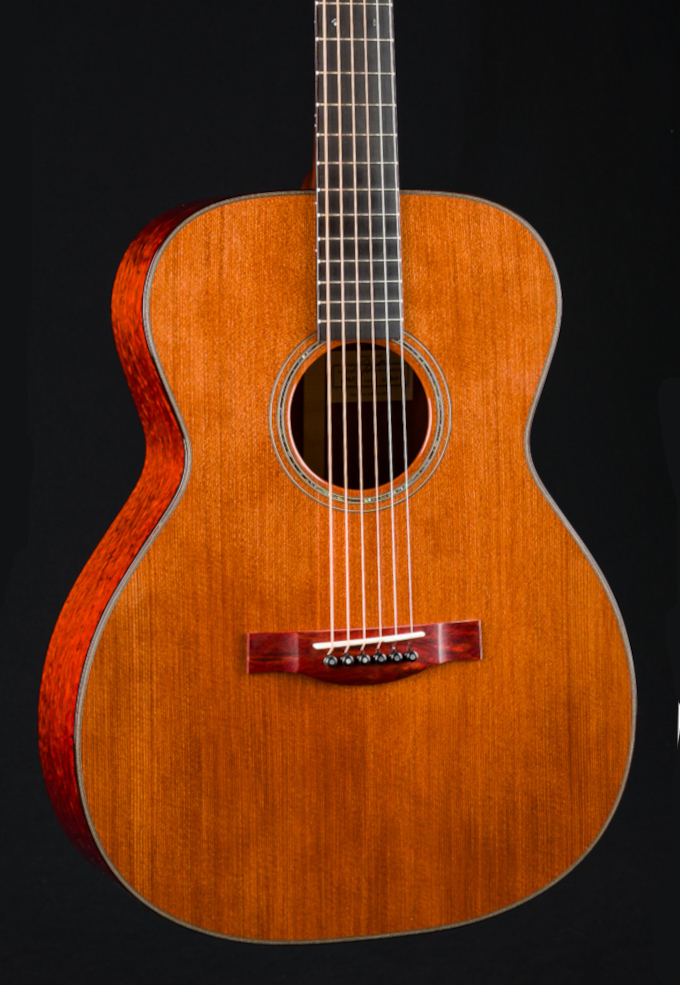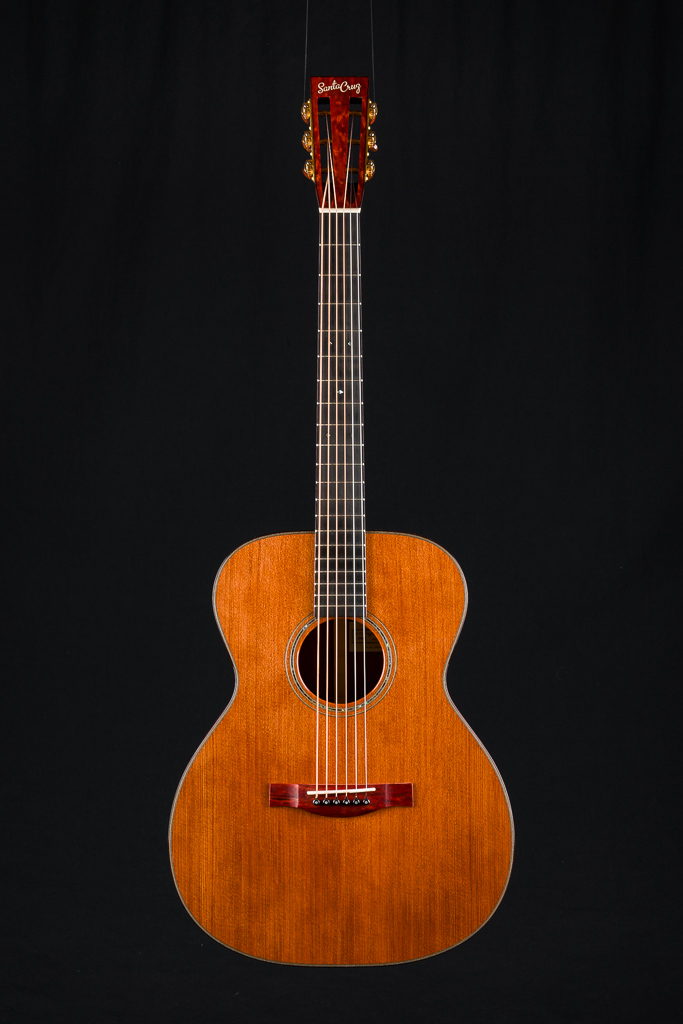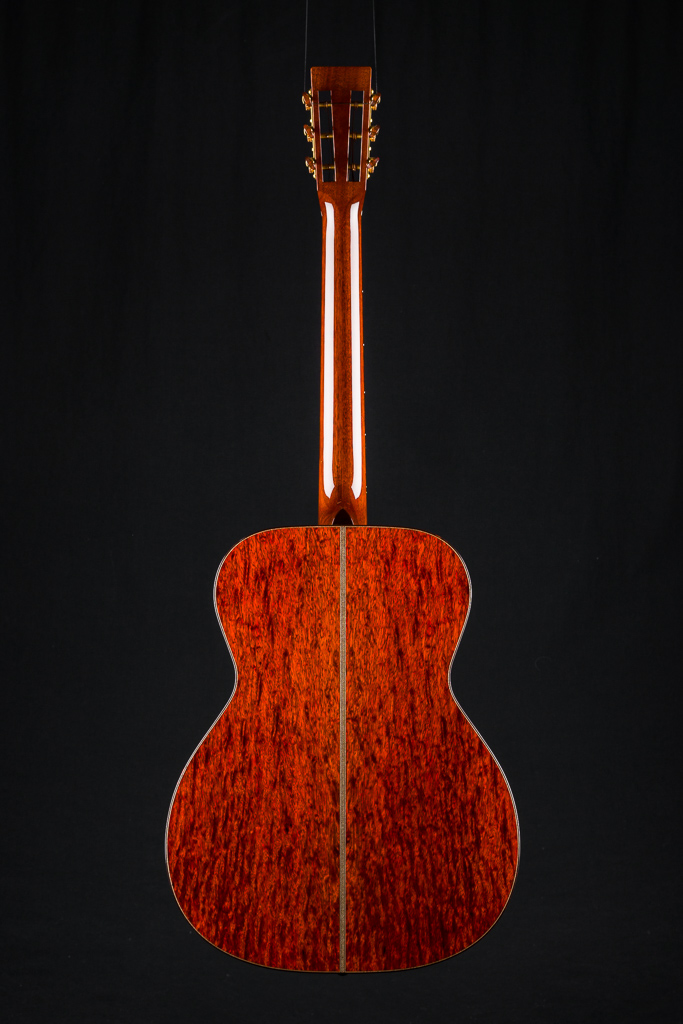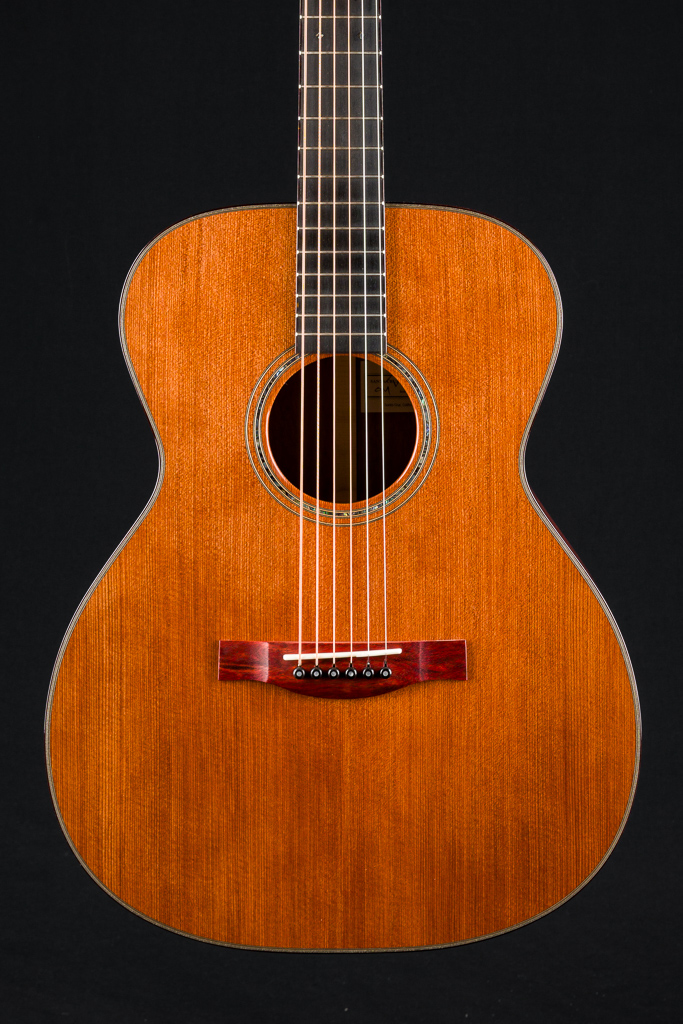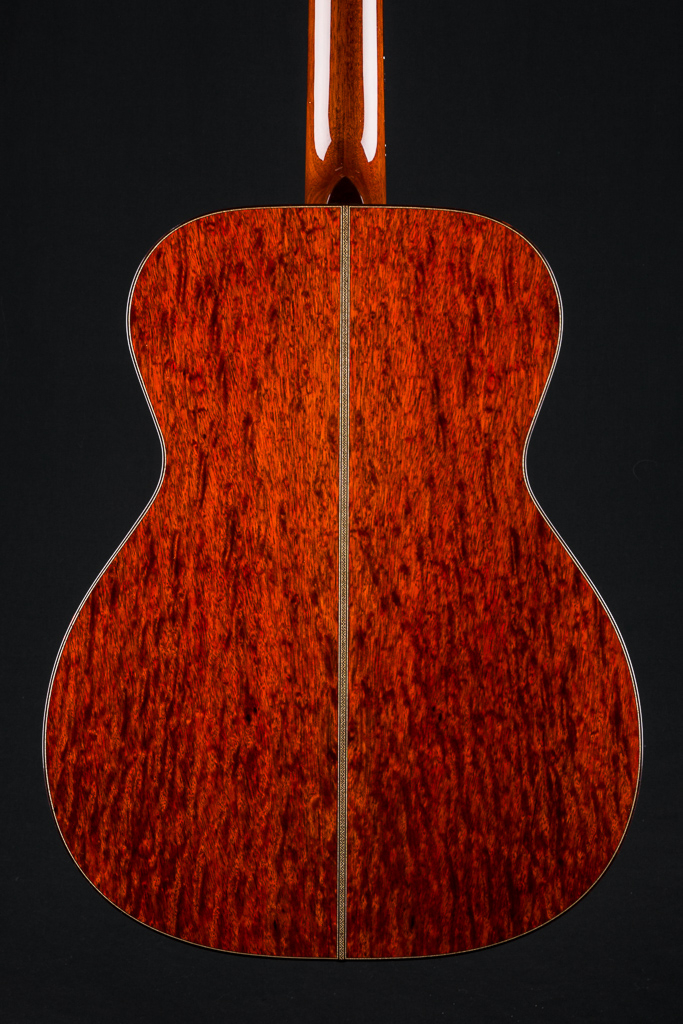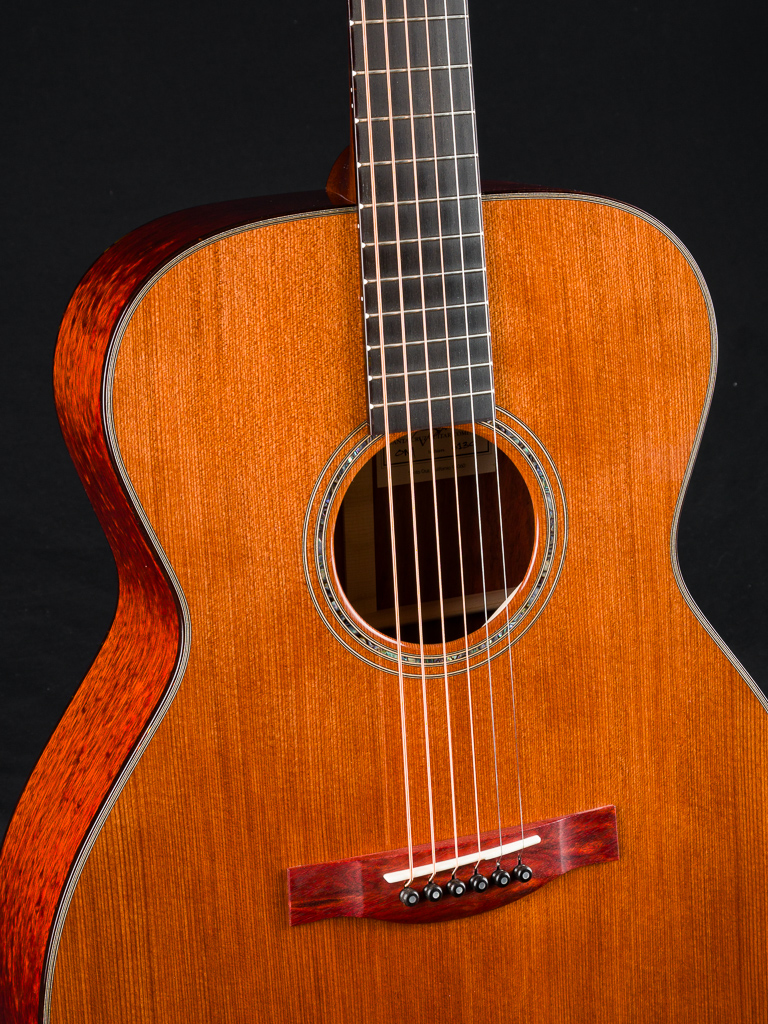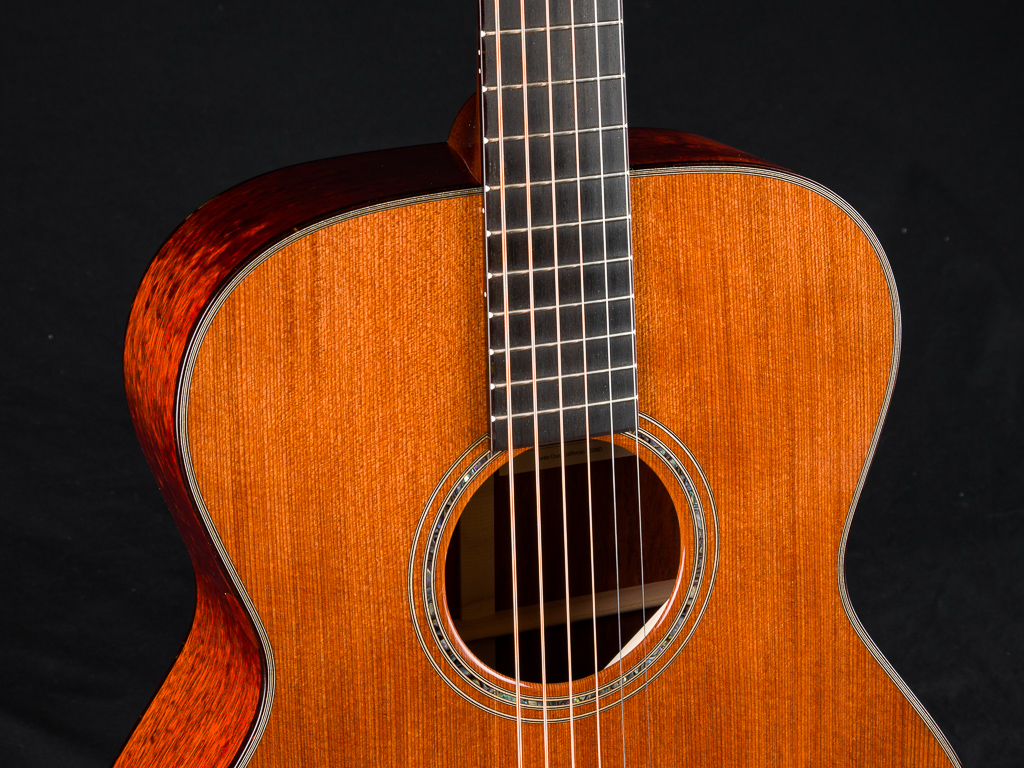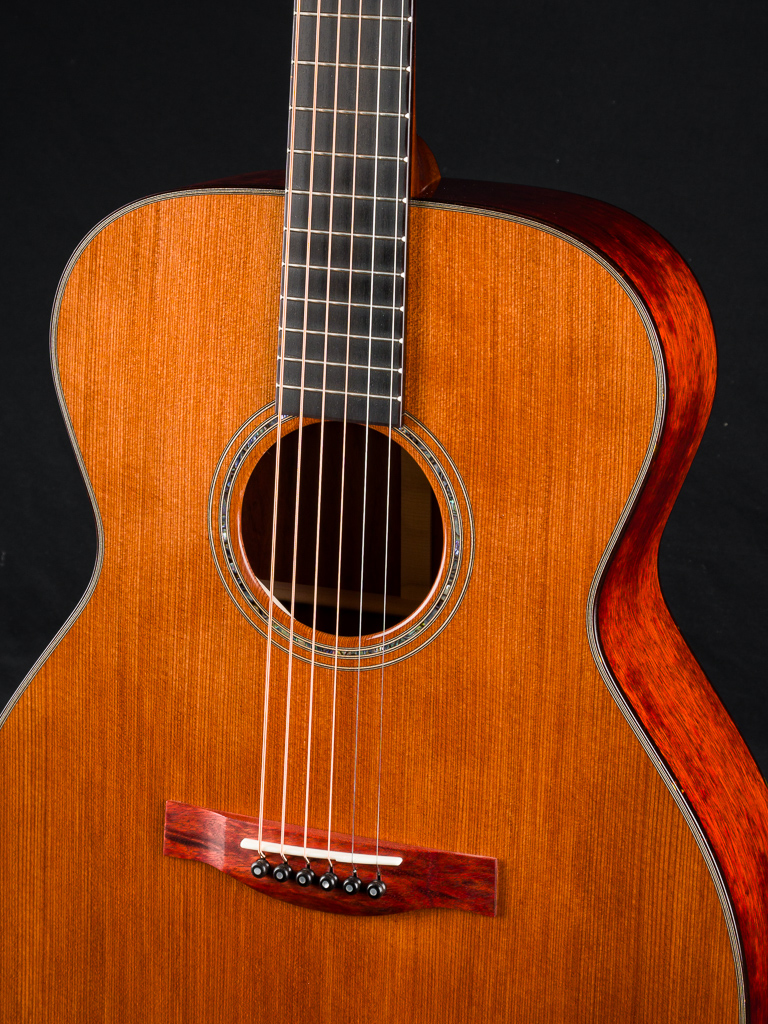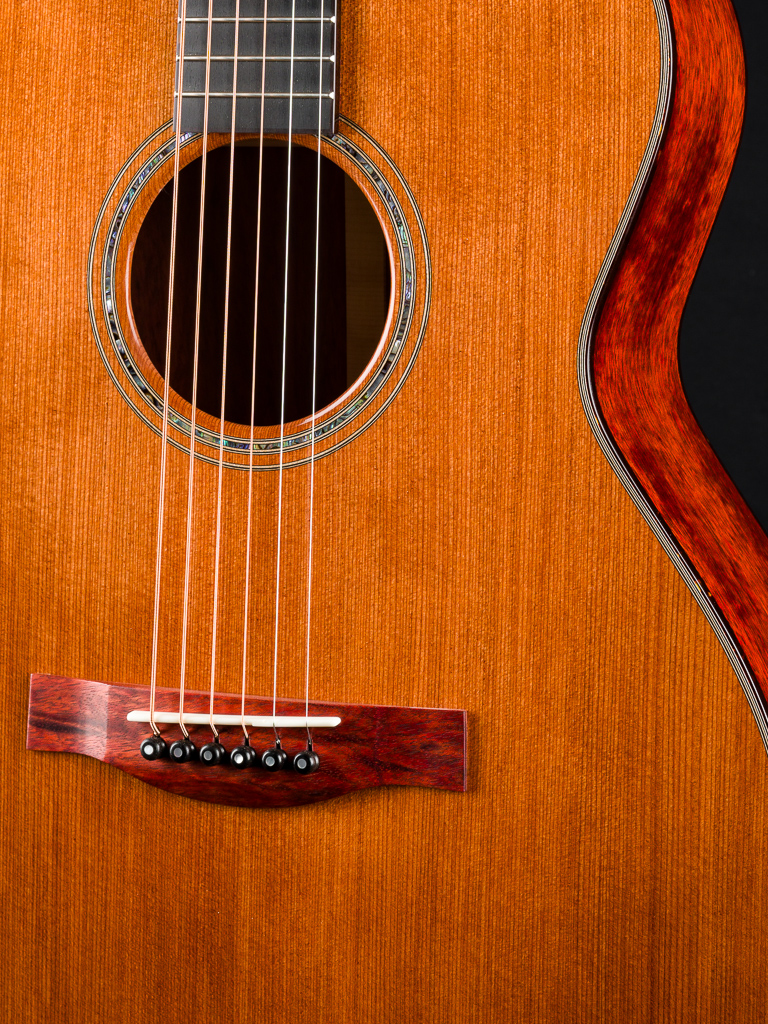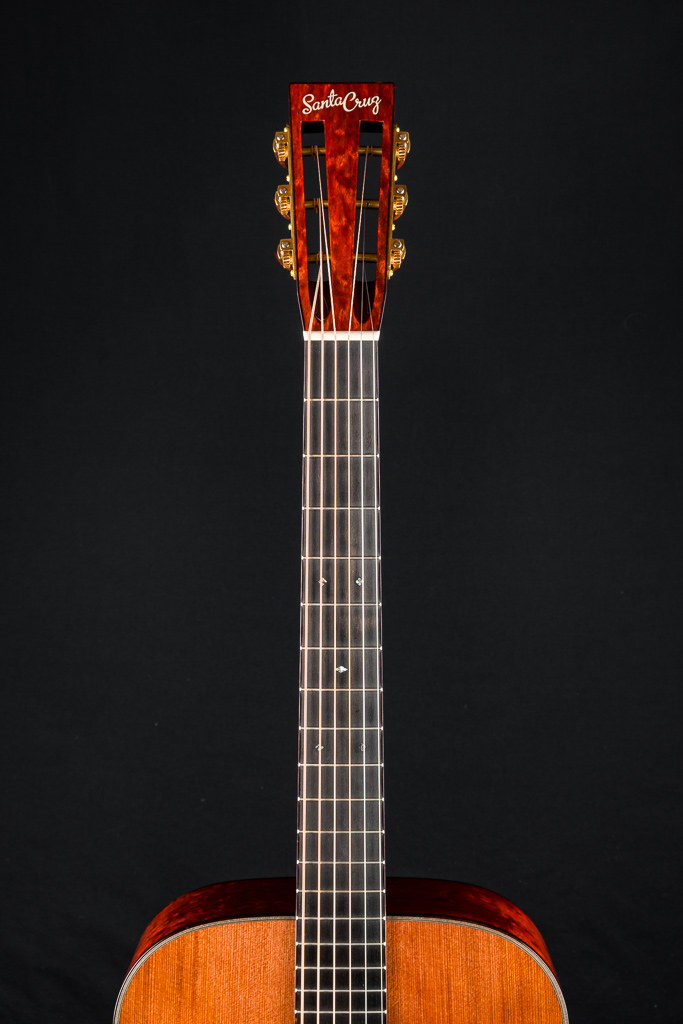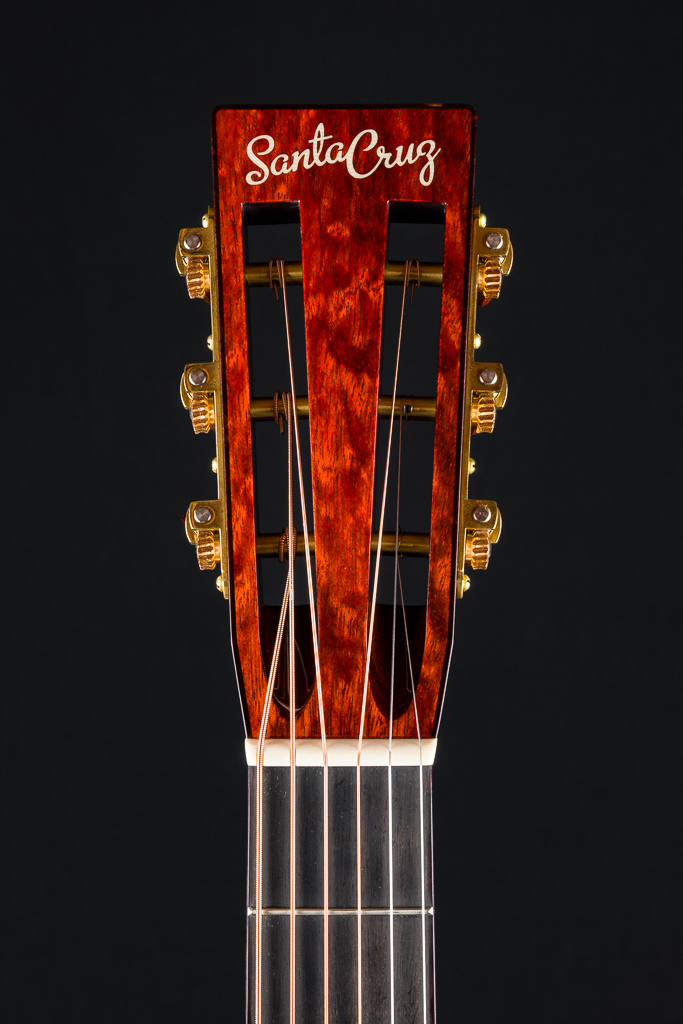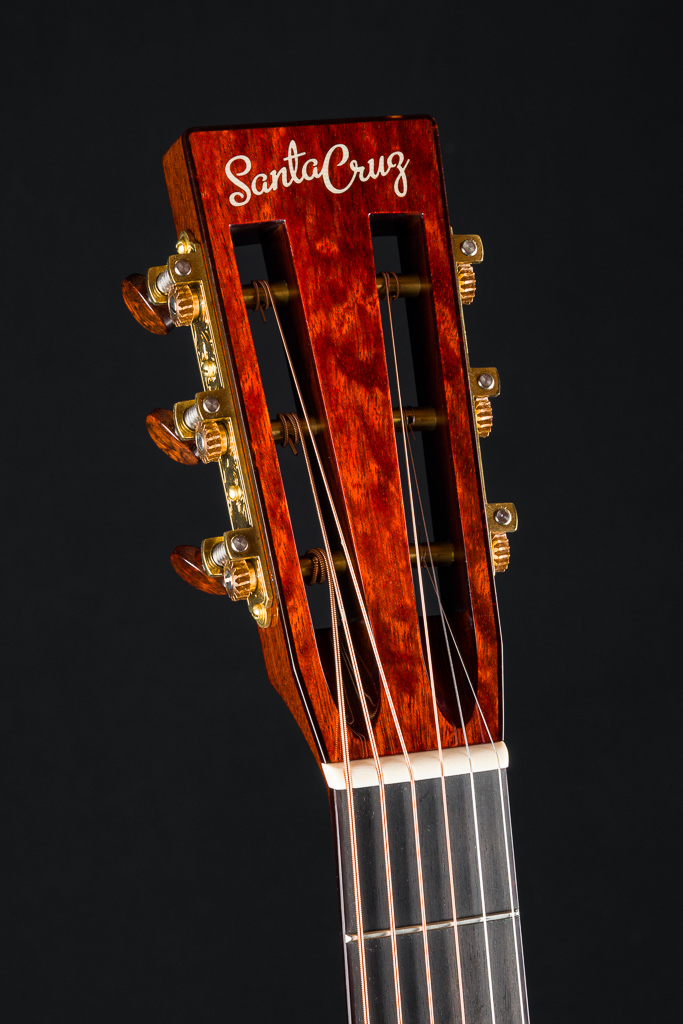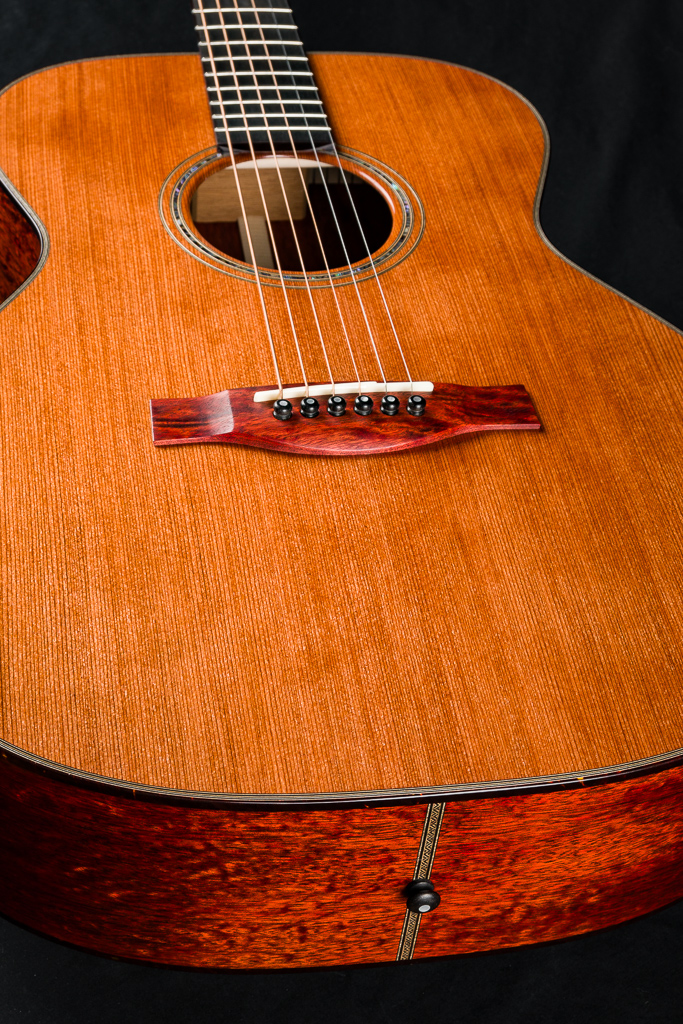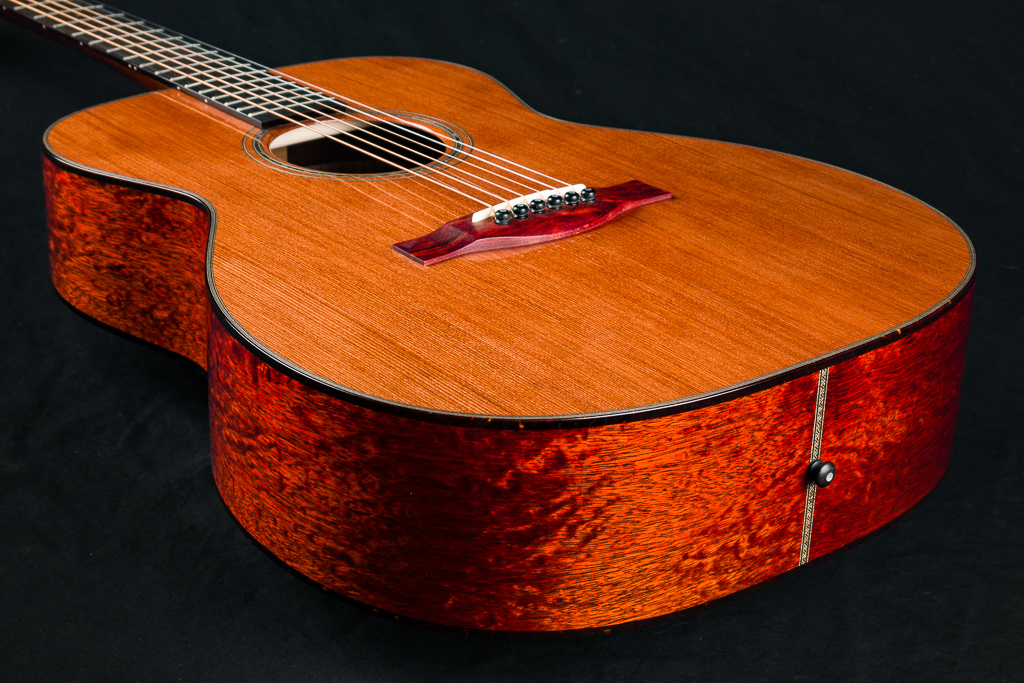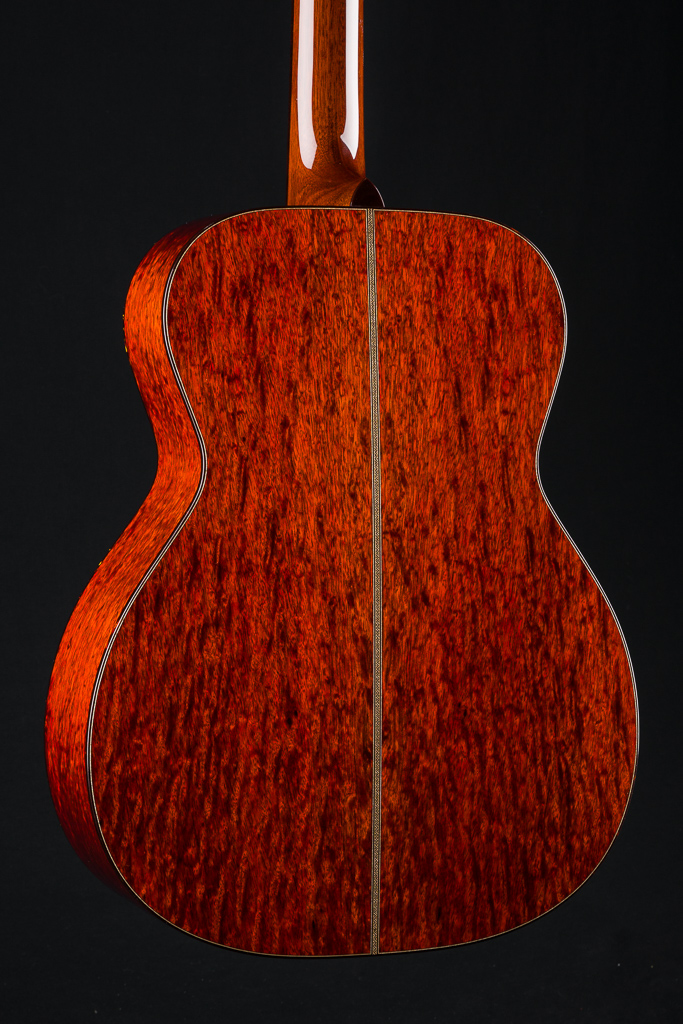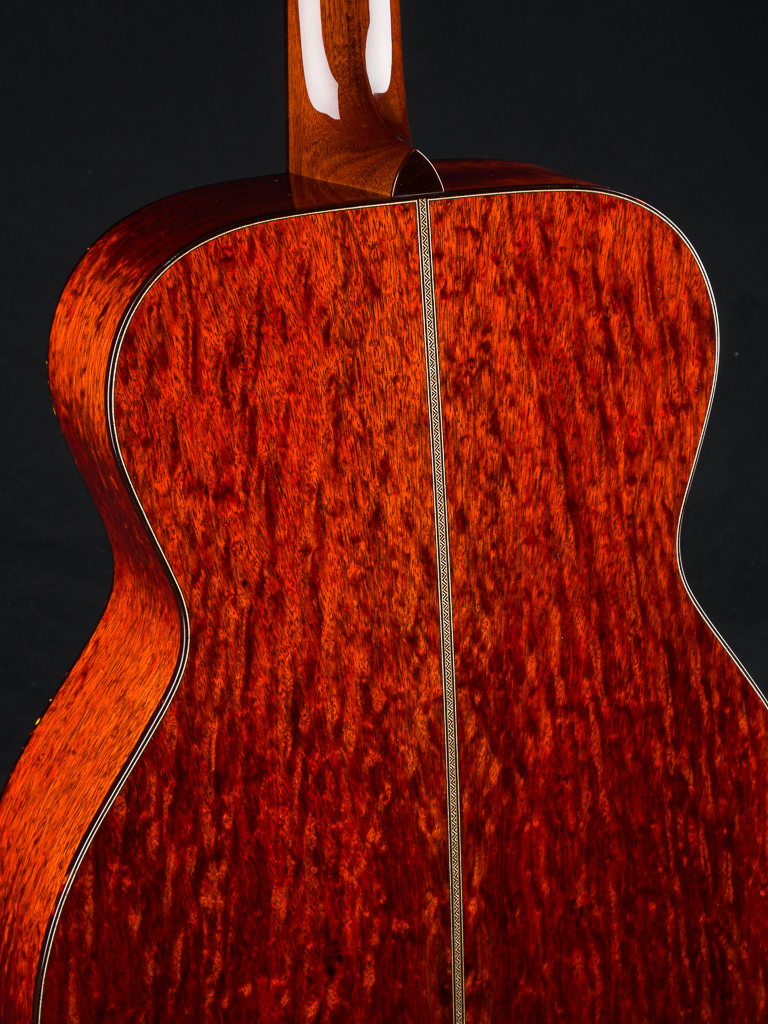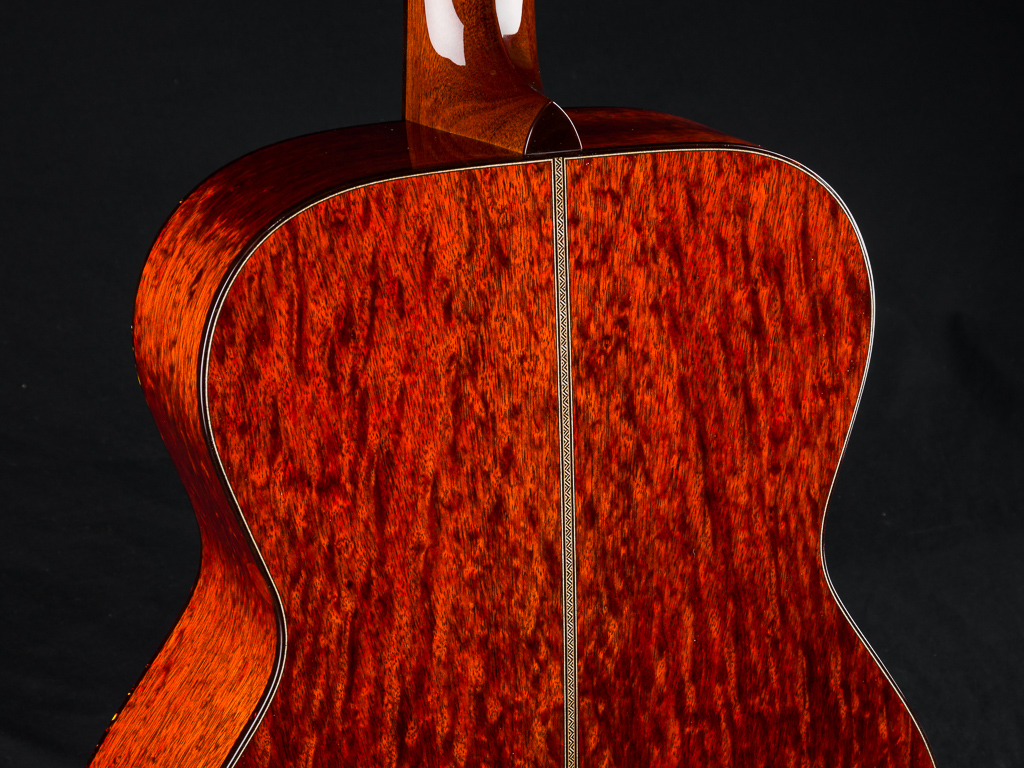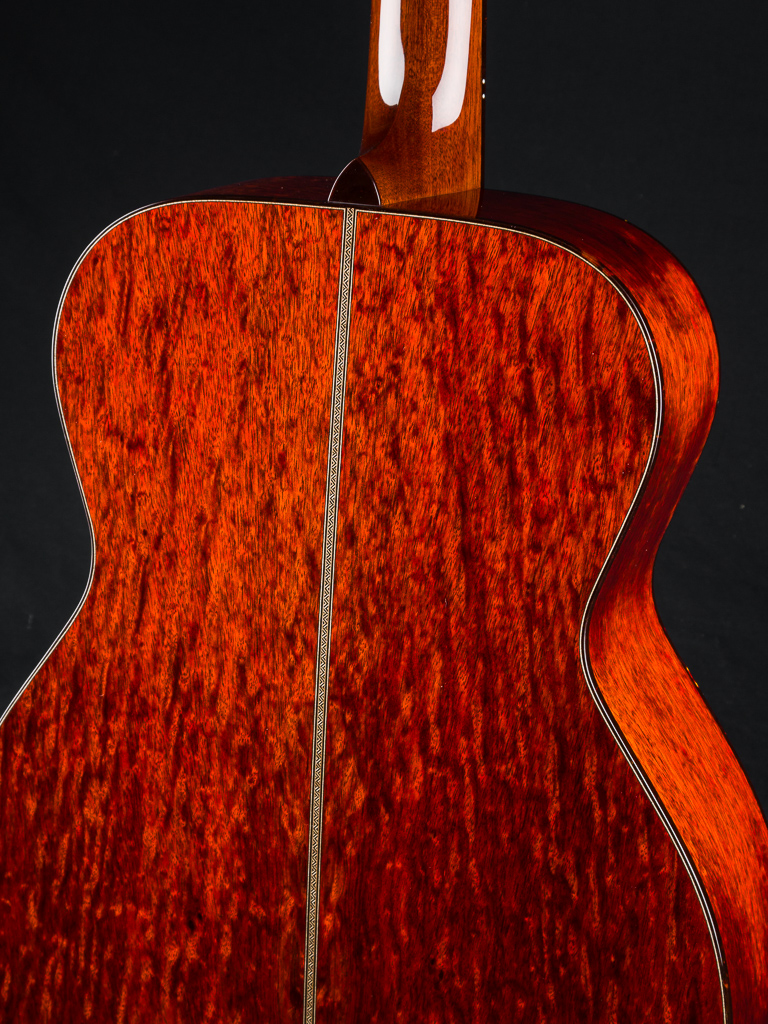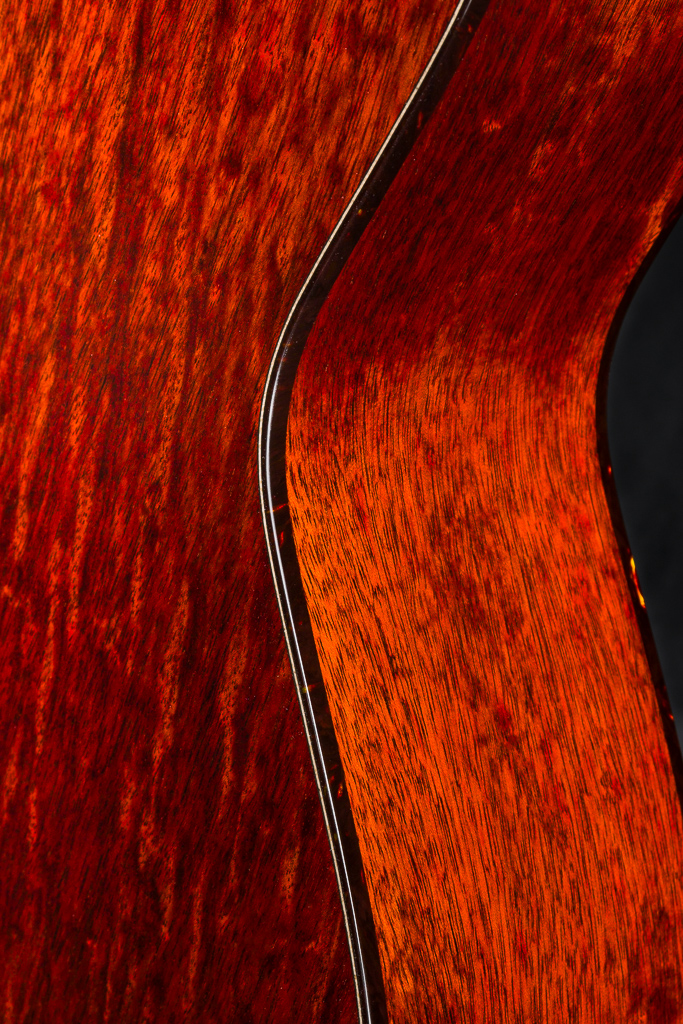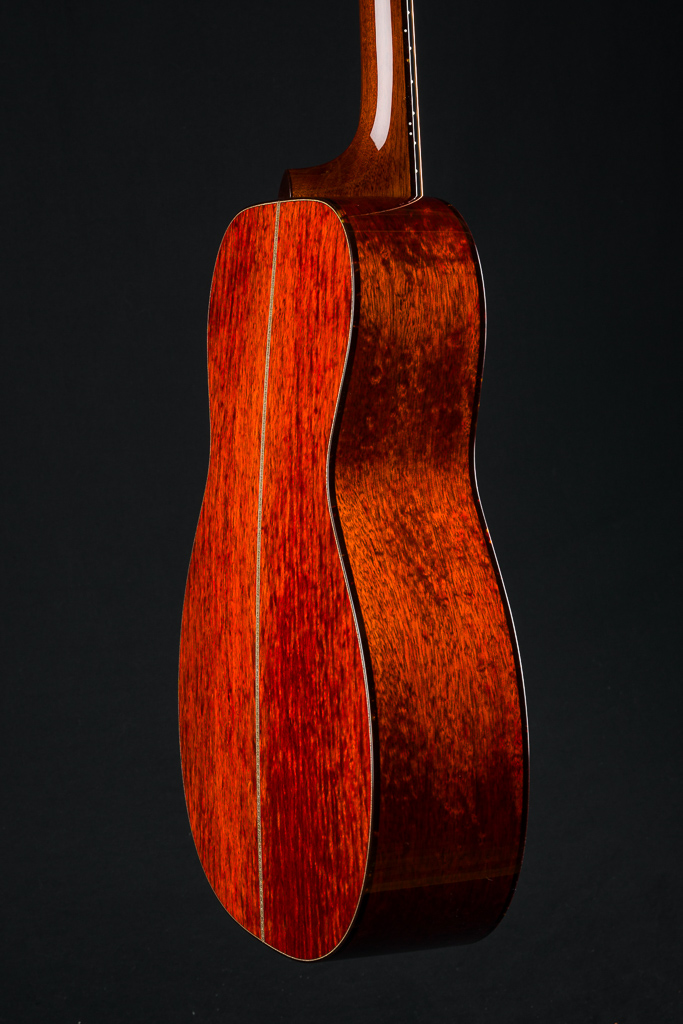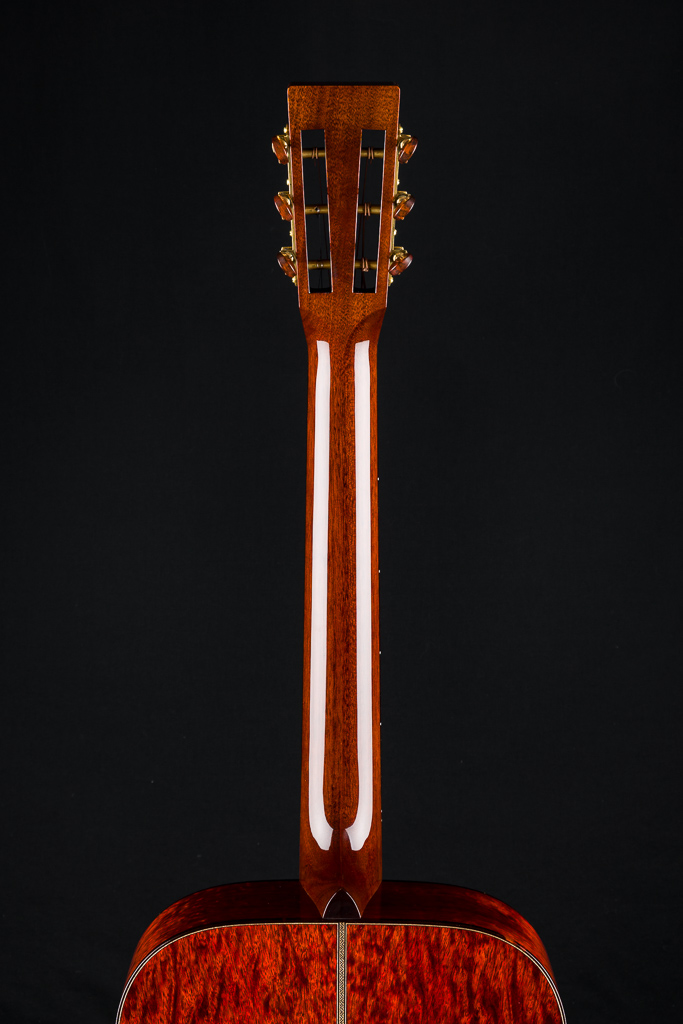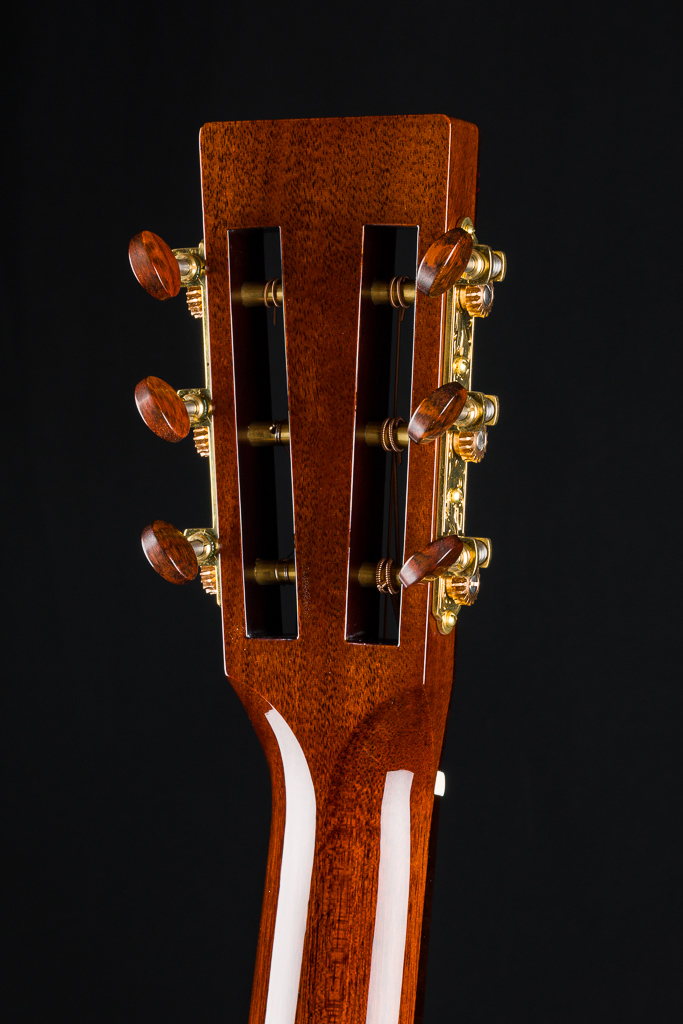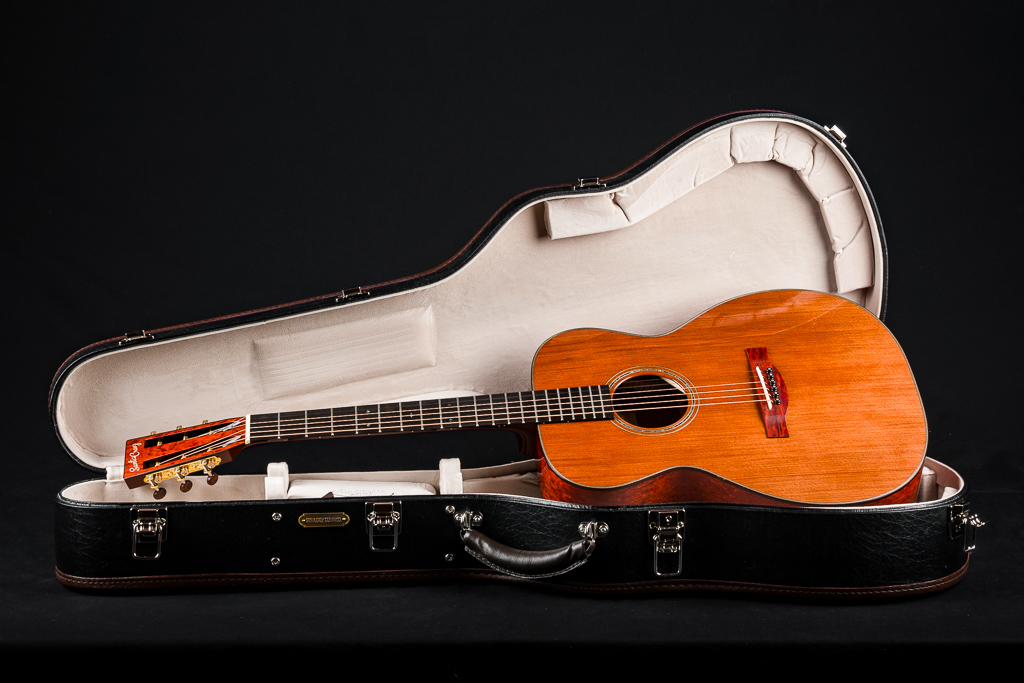Rare bird alert! Here we have a one of kind build from our friends at Santa Cruz. A pairing of old and very rare woods, This OM features master grade figured Pernambuco (Paubrasilia echinata) back, sides bridge and headstock overlay, the first guitar available from Santa Cruz built with this extremely rare wood, paired with a 200+ year old Fort Ross Chapel Redwood top. A pairing perfect in the making. If you are looking for a rare and unique Santa Cruz that would be a highly collectable heirloom build, look no further.
Pernambuco is widely used for making high quality bows for violins because of its strength, density, and flexibility. It is dynamic and articulate with a quick response and rich tones like that of rosewoods, but exceeding rosewood’s ability to transfer energy due to its density of fibers. Though the wood is highly sought after because of its resonant qualities, there are few guitar sized sets available because the trees grow so small. Take that small pool of guitar sized pieces and add on that it needs to adhere to SCGC quality, reducing it further. That is for just “plain” Pernambuco in general, which has a color that is not as rich and vibrant as they would like. Not only is plain looking Pernambuco extremely rare in their quality, but figured sets are almost non-existent. Add in the rare, rich color of this set, one of only a few existing, and now we are talking about a mythical creature. This is one of only 2 sets that Santa Cruz was able to procure, with more sets unlikely to come. These sets were reclaimed from a fence post that exhibited this unheard of figuring, so there is no evidence of finding any more. There is talk of maybe 2 more sets from another paired post, but the boards have knots and holes which will probably take that yield to 0. This set has mesmerizing color and pattern reminiscent of blister quilt, birdseye and bearclaw. The color shimmers with dimension when moved and changes lighter to darker. read more on Pernambuco below.
The old growth Redwood used on this guitar was reclaimed from the chapel at Fort Ross which was established in 1812 by fur trappers on the West Coast of what would become California, near what is now Bodega Bay in Sonoma County. The Chapel was built circa 1824, entirely of old growth Redwood planks with mortise and tenon joints. An accidental fire destroyed the chapel on October 5, 1970 and during the reconstruction that ensued, a few of these beams that were burned and removed were found to have vertical grain, perfectly suitable for instrument building. Fast forward 50 years and these precious few beams were acquired by Richard Hoover of Santa Cruz Guitars and and just recently have been milled to premium guitar tops. Richard’s assessment is the processed lumber is 200 years old and based upon the thickness of the beams, their width and length, tightness and shape of the annual rings that the original trees were quite massive and possibly thousands of years old.
Features of this OM build include Pernambuco bridge and headstock overlay, pre-war style advanced Adirondack Spruce bracing, hot hide glue construction, full tortoise body, fretboard and headstock bindings, Paua Pearl rosette, Mahogany buffed neck with slotted headstock, purfle combo multi-stripe top purfling, Gold 3-per side Waverly tuners with Snakewood buttons, zigzag backstrip and wedge strip, 1 3/4″ nut width and custom 2 3/16″ saddle spacing, label signed by Richard Hoover and more.
Includes Ameritage hardshell case and Lifetime Warranty.
Free shipping in the continental United States.
–
Pernambuco:
Pernambuco, aka Brazilwood, is perhaps the only wood that was so famous, it was responsible for the naming of an entire nation. When Portuguese ships discovered the trees on the coast of South America in the sixteenth century, they found that the wood yielded a water-soluble red dye which made for a very valuable and lucrative trading commodity. They named the tree Pau Brasil (the term pau meaning wood, and brasil meaning red or ember-like). Such a vigorous trade resulted from this wood that early sailors and merchants referred to the land itself as Terra do Brasil, or ‘Land of Brazil,’ and the name stuck.
Known as Pernambuco to bow-makers and guitar builders alike, bowyers tend to favor the heaviest and strongest pieces for use in bows. One study evaluating the suitability of Pernambuco staves for bow manufacture found that the highest grades [classes] of the wood had “a lower frequency of vessels and rays and a higher percentage of fibers when compared to the other classes. They also had higher values of density, speed of sound propagation, modulus of elasticity and modulus of rupture.”
With trees already at historically depleted levels from the exploitation for its dye wood, today’s global demand for violin bows have continued to push the species to dangerously low levels. Efforts to preserve the trees were organized even before its official listing as an endangered species in 2007. In a study of six other promising South American hardwoods, it was found that only one came even close to producing bows of acceptable quality as a substitute. This wood species is in CITES Appendix II, and is on the IUCN Red List. It is listed as endangered due to a population reduction of over 50% in the past three generations, caused by a decline in its natural range, and exploitation.
If you watch the attached video, “The Most Valuable Woods on Earth,” Michael Greenfield tells the story of Pernambuco amongst other rare woods such as Brazilian and The Tree.

